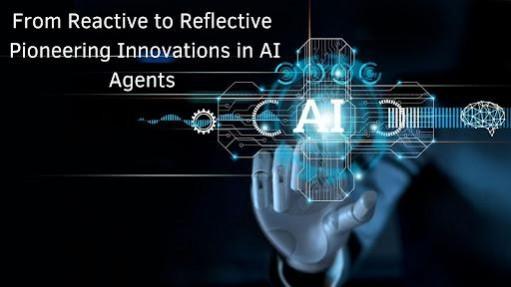
In this digital world, artificial intelligence (AI) has evolved from basic reactive systems to advanced autonomous agents capable of emulating human cognitive processes. As explored in Mohit Bharti's recent systematic review, this transformation highlights groundbreaking innovations shaping decision-making and adaptive learning. These advancements redefine the potential of AI, ushering in systems that are intuitive, efficient, and equipped to tackle complex challenges with unprecedented precision.
The Evolution of Cognitive Foundations
The earliest AI agents were reactive, focusing on a simple perception-action-response model. While effective in environments demanding quick reflexes, they lacked the depth to interpret historical context or plan for the future. The introduction of memory-based and goal-oriented systems revolutionized these frameworks, embedding nuanced decision-making capabilities. Memory models now incorporate declarative and procedural knowledge, allowing agents to simulate rational and experiential reasoning a significant leap in enabling adaptive learning.
Large Language Models: Enhancing Interaction
Large Language Models (LLMs) stand at the forefront of modern AI innovations. LLMs use advanced transformer-based architectures to facilitate natural language understanding and generation with remarkable precision. Integrating these models into AI agents has opened avenues for seamless human-computer interactions, enabling systems to comprehend context and execute complex tasks based on nuanced language cues. The emergence of prompt engineering and few-shot learning techniques has further refined these capabilities, paving the way for more personalized and contextually relevant outputs.
Reinforcement Learning: Learning Through Interaction
Reinforcement learning (RL) has significantly impacted how AI agents adapt and evolve. RL has introduced flexibility into decision-making by interacting with environments and optimizing behaviors through trial and error. Advanced techniques such as policy gradient methods and value iteration ensure agents learn optimal strategies, while hybrid approaches combine efficiency with strategic foresight. This adaptability makes RL-powered agents suitable for diverse applications, from resource management to real-time problem-solving.
Advanced Reasoning and Self-Reflection
Recent advancements in reasoning mechanisms have enabled AI systems to mimic human-like thought processes. Chain-of-thought prompting allows agents to solve problems methodically by breaking them into logical steps, enhancing accuracy and transparency key for ethical AI.
Additionally, self-reflection mechanisms empower AI to evaluate actions, outcomes, and decisions in real-time, fostering continuous improvement. These capabilities are particularly valuable in dynamic environments, where static models often fall short. Together, these innovations mark a transition from pre-programmed operations to adaptive, self-improving systems capable of evolving with changing demands.
Knowledge Graphs and Retrieval-Augmented Generation
Knowledge graphs are crucial for AI. They organize information into interconnected entities for effective reasoning and retrieval, enhancing contextual understanding. Retrieval-augmented generation (RAG) combines generative models with external knowledge, ensuring creativity and factual accuracy. These technologies enable AI systems to provide reliable, context-aware solutions, supporting diverse applications and improving decision-making across various domains.
Task Planning and Collaboration
AI agents increasingly handle intricate tasks through advanced planning and decomposition techniques. Hierarchical planning structures allow them to achieve multi-layered objectives, while adaptive mechanisms ensure responsiveness to changing conditions. Multi-agent collaboration further amplifies these capabilities, with agents leveraging collective intelligence for coordinated problem-solving. Communication protocols and resource-sharing strategies enable seamless interaction, making these systems invaluable in complex scenarios requiring teamwork.
Balancing Innovation with Responsibility
As AI advances, embedding transparency, accountability, and fairness is vital. Ethical frameworks, societal compliance, standardized practices, and ongoing oversight are essential for fostering responsible innovation and effectively addressing critical challenges.
In conclusion, Mohit Bharti's exploration of AI agents offers a comprehensive view of their architectural evolution and future potential. These innovations, from foundational frameworks to cutting-edge technologies like LLMs and RAG, signal a transformative era in AI development. As the field advances, the integration of ethical considerations and adaptive capabilities will define the trajectory of autonomous systems, underscoring the critical role of research in fostering a responsible AI-driven future.








![Sky is the limit: IndiGo is now tenth largest airline by capacity globally; growth indisputable [details]](https://data1.ibtimes.co.in/en/full/767455/sky-limit-indigo-now-tenth-largest-airline-by-capacity-globally-growth-indisputable-details.jpg?w=220&h=138)








